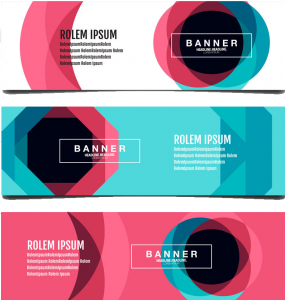The marketing landscape isn’t what it used to be. Gone are the days when brands could scoop up user data with little thought to consent or consequence. In 2025, smart businesses are steering away from invasive tactics and leaning into privacy-centric advertising—not just to tick legal boxes, but to build genuine trust with their audience.
This shift isn’t just about keeping up with regulations like the EU’s GDPR or California’s CCPA—it’s a calculated move that reflects what today’s consumers truly value: control, transparency, and respect for their personal information. These privacy laws have set new standards, making it crystal clear that vague fine print and hidden trackers are no longer acceptable. Brands now need to get explicit permission and communicate clearly, or risk falling behind.
Consumers themselves are more aware than ever. A staggering 76% of Americans say they don’t trust social media companies with their data, and 70% aren’t confident in how businesses are handling AI. With 72% calling for tighter privacy laws, it’s clear: people want more control over what happens to their information—and they’re demanding it loud and clear.
This year, privacy-centric advertising isn’t just a best practice—it’s a competitive advantage. Between rising consumer expectations, stricter global laws, and evolving tech landscapes, brands that put privacy at the heart of their strategy are not just staying compliant—they’re staying ahead.
Table of Contents
ToggleWhat Is Privacy-Centric Advertising and Why Does It Matter?

Privacy-centric marketing—also called privacy-led or privacy-first marketing—is all about putting the customer’s data rights front and center. Instead of relying on sneaky trackers or buying sketchy data from third-party vendors, this approach focuses on collecting zero-party and first-party data—information that consumers willingly hand over, with clear and informed consent.
And let’s be honest—this isn’t just about staying on the right side of the law anymore. With global privacy regulations like GDPR and CCPA tightening the noose on outdated data practices, brands need to evolve or risk being left behind. Privacy-centric advertising gives businesses a smarter, cleaner way to engage with consumers—by respecting their boundaries, being upfront, and letting transparency do the talking.
But there’s more to it than just legal compliance. This approach actually delivers better results. Because when people choose to share their preferences, you get higher-quality insights than what you’d scrape from second-hand or third-party data. That leads to more accurate personalization, more relevant campaigns, and—yes—more revenue. It’s data done right.
Why is this so important now? Because consumer trust is wearing thin. Nearly one in three people will reject non-essential cookies the moment they’re given the option. Why? Around 36.6% say they don’t want to be bombarded with ads. 36.3% simply don’t trust the website asking. And 27.1% are worried about their data falling into the wrong hands. These aren’t just statistics—they’re loud signals that people want more control and less creepiness.
This is where privacy-centric advertising shines. By honoring consumer choice and staying transparent, brands not only avoid penalties—they earn trust. And trust is the golden ticket. According to McKinsey, companies that excel at building strong customer relationships (usually through personalization done right) generate 10 to 15% more revenue than those that don’t. That’s a real payoff for doing the right thing.
In short, privacy-centric marketing isn’t a passing trend—it’s the future. It’s about shifting from tracking to permission, from manipulation to conversation. And in this new landscape, the brands that lead with ethics will win both hearts and wallets.
Why It Matters?

#1. We’re Stepping Into a Cookieless Future—Ready or Not
For years, marketers leaned heavily on third-party cookies—snatching up user data left, right, and center with little concern for quality, context, or consent. It was all about collecting massive volumes of data, hoping something meaningful would shake out. But let’s face it: most of that information was fragmented, impersonal, and often stitched together like a digital Frankenstein’s monster. Worst of all, user consent was rarely part of the equation.
Fast forward to now—things are changing fast. Tools like those from Usercentrics are giving brands the ability to gather meaningful customer data with full transparency and consent baked in. It’s a new era where privacy-centric advertising is stepping up as the smarter, cleaner, and more ethical alternative.
As we move away from cookies and towards more sustainable data practices, first-party and zero-party data are becoming the new gold standard. Why? Because they come straight from the source—your users—and they’re shared willingly. That means better insights, better targeting, and better business decisions that actually improve customer engagement. No shady workarounds. Just honest, respectful marketing that works.
#2. Customers Want Control—And They Deserve It
Today’s consumers aren’t clueless—they’re clued in. They know their data has value, and they expect brands to treat it with care. In fact, 65% of consumers say “misuse of personal data” is the number one reason they’d stop trusting a brand. That’s not just a stat—it’s a warning shot.
If your brand isn’t clear about what data it collects and how it uses it, you’re on borrowed time. Trust is fragile, and once it breaks, customers will walk—often right into the arms of a competitor who takes privacy seriously. That’s why privacy-centric advertising isn’t just a compliance strategy—it’s a growth strategy. It builds loyalty, strengthens brand reputation, and sets the stage for long-term relationships.
Privacy-first marketing is no longer a nice-to-have—it’s a must. In an environment where consumers are paying more attention to their rights and demanding more transparency, brands that ignore these expectations are risking more than just clicks—they’re risking their credibility.
#3. The Legal Pressure Is Real—And It’s Not Going Away
On top of consumer demands, regulators are also tightening the screws. From Europe’s GDPR to California’s CCPA—and now the Digital Markets Act (DMA)—businesses are under serious pressure to clean up their data practices. While the details of these regulations vary, the core principles are clear: collect less, explain more, get permission, and give users control.
That means your marketing practices must embrace transparency, consent, and accountability at every stage. And if you don’t? Expect heavy fines, platform restrictions, and brand damage that could take years to undo. Even your access to essential tools like Google or Facebook Ads could be limited if you’re found to be non-compliant.
As Adelina Peltea, CMO of Usercentrics, puts it:
“How marketing is done is changing a lot, thanks in large part to consumer expectations and regulatory and business requirements. Privacy needs to be a critical component of that. Privacy-first marketing builds trust and more engaged long-term relationships with customers, and the resulting data for marketers is higher quality as well.”
In short, we’re not just talking about a trend—we’re witnessing a fundamental shift in how marketing works. The path forward is clear: lean into privacy-centric advertising, put transparency at the heart of your strategy, and build a brand that people can trust.
Because in this new digital world, respecting privacy isn’t just good ethics—it’s smart business.
Key Data Privacy Rules Every Marketer Should Have on Their Radar

If you’re in marketing today, data privacy isn’t just background noise—it’s front and center. Whether you’re running global campaigns or managing local outreach, you need to know the rules of the game when it comes to collecting, using, and sharing customer data. The stakes are too high to play it loose, especially when consumer trust and legal compliance hang in the balance.
Here’s a quick breakdown of the key data privacy frameworks and tools that every marketer needs to wrap their head around to stay on the right side of compliance—and keep privacy-centric advertising both ethical and effective.
#1. Digital Markets Act (DMA)
The DMA is the European Union’s move to level the digital playing field. It zeroes in on tech giants—referred to as “gatekeepers”—and holds them to stricter rules on how they collect and use data. If you’re marketing through platforms like Google or Meta, the DMA affects you too. This regulation pushes for fairness, transparency, and more user control, all of which reinforce the importance of privacy-centric advertising in today’s digital landscape.
#2. Google Consent Mode v2
This is a game-changer for marketers using Google’s ecosystem. Google Consent Mode v2 helps you adjust how Google tags behave based on the user’s consent status. In plain terms, it allows you to keep tracking and analytics compliant—without throwing your performance data out the window. You can still gather valuable insights, but with your users’ permission and trust intact.
#3. General Data Protection Regulation (GDPR)
Still the gold standard for global privacy regulations, the GDPR enforces strict rules on how personal data is collected and processed. It mandates explicit consent and gives users full control over their information. It’s not just an EU concern—GDPR principles have inspired similar laws worldwide. For anyone practicing privacy-centric advertising, aligning with GDPR is non-negotiable. It’s the blueprint for ethical data practices that prioritize transparency and user rights.
#4. California Consumer Privacy Act (CCPA) & California Privacy Rights Act (CPRA)
If you’re marketing to consumers in California, these two laws are your playbook. The CCPA and its expansion, CPRA, empower users with clear rights: the right to know what data is collected, the right to correct or delete it, and the right to opt out of having it sold or shared. Marketers must disclose data practices clearly and offer users an easy way to exercise their rights—or risk serious legal and reputational consequences.
#5. Transparency & Consent Framework (TCF) v2.2
Created by IAB Europe, the TCF v2.2 is a framework that helps advertisers, publishers, and tech vendors stay in sync with GDPR standards. It standardizes how consent is requested, managed, and shared across the ad tech supply chain. If your advertising relies on programmatic or real-time bidding, using the TCF is crucial for ensuring your privacy practices are not just compliant, but also coordinated with your partners.
Privacy isn’t a side issue anymore—it’s a central part of smart, responsible marketing. By keeping up with these key regulations and integrating tools like Google Consent Mode and TCF v2.2, you’re not just avoiding legal trouble—you’re building stronger relationships with your customers.
Privacy-centric advertising is about more than ticking boxes—it’s about creating campaigns that respect your audience’s boundaries and earn their trust in return. When you lead with integrity, you don’t just comply—you connect. And in today’s crowded digital space, that’s what sets real brands apart.
What Some of the Challenges of Privacy-First Marketing?

Privacy-first marketing sounds like a dream on paper. You get to build trust, stay compliant, and position your brand as a protector of user rights. But the road to responsible marketing is anything but smooth. Between limited data access, shifting regulations, and the ongoing tug-of-war between personalization and privacy, marketers are finding themselves in murky waters more often than not.
Here’s a clear-eyed look at the key challenges of privacy-centric strategies—and how to face them without losing your footing or your audience.
#1. Data Access is More Limited Than Ever
Goodbye third-party cookies, hello blind spots. Traditional tracking methods made it easy to monitor user behavior across sites and build detailed profiles. With the shift toward privacy-first marketing, those days are over. Now, you’re mostly limited to what happens on your own platforms—and that means less visibility into user journeys, preferences, and touchpoints.
As Usercentrics CMO Adelina Peltea puts it, “Marketers are concerned about access to and potential loss of data, as well as obtaining valid user consent.” The upside? It’s not all doom and gloom. These concerns are manageable through greater transparency and a compelling value exchange—telling users why they should share their data and how it benefits them.
Instead of cobbling together sketchy insights from third-party sources, now’s the time to go straight to the source. Zero-party and first-party data—what your customers tell you directly or share through actions on your platforms—offer cleaner, more accurate insights. Not only do you get better data, but your customers feel more in control of how their information is used. That’s a win-win in any marketer’s playbook.
#2. Attribution is Trickier in a Cookieless World
Attribution has always been part science, part guesswork. Now, without cookies and device IDs doing the heavy lifting, connecting the dots between ad impressions and conversions is even tougher.
Let’s face it—privacy-centric advertising has made it harder to figure out what’s actually working. Tracking users across websites and devices without infringing on privacy rights is like threading a needle in a windstorm. But it’s not impossible.
Conversion modeling is stepping in as the hero of the hour. Using machine learning, it fills in the blanks by identifying patterns and estimating conversions based on observable behavior. It may not offer the pixel-perfect accuracy of traditional methods, but it delivers the directional insights marketers need to keep strategies sharp and budgets well spent.
As Peltea notes, “Marketers have questions about targeting, personalization, and measurement… but there are ways to adapt without alienating customers or blowing your budget.” The key is using smarter tools, not sneaky ones.
#3. The Regulatory Landscape Keeps Shifting
Just when you think you’ve got compliance down, a new regulation swoops in and changes the rules of the game. Whether it’s the GDPR, CCPA, CPRA, or emerging mandates like the AI Act, marketers must stay nimble. And when tech giants like Google update their requirements, it’s not optional—it’s mandatory if you want to keep using their platforms effectively.
The reality? Regulations are becoming broader, deeper, and more interconnected. For marketing teams—especially smaller ones—keeping up can feel like running a legal marathon without a water break. But ignorance is no defense. Noncompliance can cost more than just a fine; it can tank your reputation and shut the door on major ad platforms.
A privacy-first approach means staying proactive, not reactive. That means regular check-ins with your legal and data teams, embracing transparency, and investing in tools that support real-time compliance.
#4. Personalization Without Overstepping
Customers still want personalized experiences—they just don’t want to feel like they’re being digitally stalked. That’s the new tightrope marketers must walk.
Without third-party data flooding in, personalization has to come from sources where consent is clear and intentional. This is where preference management steps up. When users can tell you exactly what they want, how often they want it, and through which channels, you no longer need to guess. You just need to listen.
By collecting zero-party and first-party data through customer accounts, purchase behavior, feedback forms, and surveys, you can craft experiences that feel tailored and respectful. Plus, when customers see that their choices are directly reflected in the content, offers, or messages they receive, trust goes through the roof.
This is the sweet spot of privacy-centric advertising: it lets you deliver value without invading privacy, and it turns user consent into a relationship-building tool.
Privacy-first marketing isn’t just a trend—it’s a tectonic shift. The challenges are real: less data, harder attribution, more complex rules, and new personalization demands. But the solution isn’t to resist—it’s to rethink.
By embracing privacy-centric advertising practices, you’re not only safeguarding your brand from legal headaches—you’re also future-proofing your strategy in a world where trust is the new currency. Make privacy part of the value you offer, not a compliance chore, and your customers will stick around—not just for the short term, but for the long haul.
Privacy-First Marketing Strategies to Stay Compliant and Win Customer Trust

Today’s consumers are no longer in the dark about their data. They know what it’s worth, and they expect you to treat it with care. That’s why a privacy-first marketing strategy isn’t just a smart move—it’s a necessary one.
To build real trust and stay on the right side of the law, your approach to marketing needs to be as respectful as it is effective. Here’s how to strike the right balance between personalization and privacy, while still offering an experience that feels both human and valuable.
#1. Make Consent Clear, Simple, and Customer-Friendly
One of the easiest ways to lose trust? Burying your intentions in a mile-long privacy policy written in legalese. If you want customers to feel comfortable sharing their data, you need to speak their language—literally and figuratively.
Start by simplifying your consent process. That means using plain, straightforward language in your banners, checkboxes, and privacy notices. Ditch the jargon. Be honest and transparent. Let people know exactly what you’re collecting, why you’re collecting it, and how it’s going to be used.
When people understand what they’re agreeing to, they feel empowered—not tricked. That sense of control builds trust and increases the likelihood that they’ll opt in and engage with your brand.
This is where a consent management platform (CMP) becomes your best friend. A good CMP streamlines the process of capturing and managing user permissions, helping you stay compliant across multiple countries, platforms, and devices—without overwhelming your team.
For example, Usercentrics CMP delivers a clean, intuitive interface that’s fully customizable, so it fits your brand. It doesn’t just check boxes for GDPR or CCPA compliance—it goes a step further by tailoring consent banners based on users’ locations (thanks to geolocation features), displaying language-specific content, and allowing people to choose exactly what they’re comfortable sharing.
This level of transparency and choice plays directly into the goals of privacy-centric advertising, where every interaction is built on mutual respect. You’re not just marketing—you’re building a privacy-respecting relationship that encourages long-term engagement.
#2. Educate While You Inform
Transparency goes hand-in-hand with education. Don’t just throw up a banner and hope for the best. Use every touchpoint—whether it’s your cookie policy, signup form, or onboarding flow—as an opportunity to explain why their data matters and how it will improve their experience.
Want to personalize their product recommendations? Say that. Want to fine-tune your content for relevance? Let them know. Framing data collection as a value exchange helps users see the benefit and makes consent feel less like a checkbox and more like a conversation.
This approach is the foundation of privacy-centric advertising. It puts your audience in the driver’s seat while ensuring you’re not flying blind when it comes to crafting meaningful, personalized experiences. You still get data—just the right kind, from the right people, in the right way.
#3. Offer Granular Control, Not All-or-Nothing Choices
Too many brands make the mistake of offering binary options: “Accept all” or “Reject all.” But privacy isn’t black and white—it’s nuanced. Your customers should be able to fine-tune their preferences and choose exactly how much they want to share.
Granular controls allow users to toggle specific types of data—like analytics, marketing, or personalization. This kind of flexibility not only enhances trust, but also reduces opt-out rates. People are more likely to say yes when they’re not being forced into a corner.
It also shows you respect their agency. In a world where data is currency, giving users full control over their “spend” shows that you understand its value.
At the heart of every privacy-first marketing strategy is respect—for the customer, their choices, and their data. When you lead with transparency, simplify consent, and educate along the way, you build a foundation that can support both compliance and customer loyalty.
In a digital age where trust is fragile, privacy-centric advertising offers a way forward. It shows that you’re not just chasing clicks—you’re building connections. And in the long run, that’s what turns customers into advocates and transactions into relationships.
#4. Collect Zero-Party and First-Party Data That Builds Real Connections
Let’s face it, the era of third-party cookies is phasing out faster than yesterday’s viral trend. So, if you’re serious about building a privacy-centric advertising strategy that respects your customers while still driving results, you need to focus on collecting zero-party and first-party data.
What does that mean in plain terms? It’s all about collecting information directly from your audience — through your website, app interactions, quizzes, surveys, and every authentic touchpoint where customers willingly share their preferences, needs, and behaviors. No more guesswork. No more shadowy tracking. Just real data from real people.
As Adelina Peltea, CMO of Usercentrics, puts it, “Hearing directly from customers is the gold standard.” And she’s right. This kind of data gives you sharper insight and lets you build deeper, more personalized relationships that are rooted in mutual trust and ongoing engagement.
This has to be a two-way street. Your customers should get something in return. If they’re handing over their info, make it worth their while. Maybe it’s a discount, early access to new drops, a personalized shopping experience, or just content that truly hits home.
Imagine a clothing brand launching a quick style quiz. The brand asks users about fit preferences, favorite colors, budget ranges, and vibe. The reward? Custom outfit recommendations and a little surprise discount at checkout. That’s value exchange done right. The customer feels seen and appreciated, and you get valuable zero-party data that fuels your privacy-centric advertising efforts — without breaching trust.
Just make sure you’re not going overboard with pushy emails or irrelevant promos. Give your users options — let them choose what topics they care about, how often they hear from you, and through which channels. Let them steer their experience, and they’ll stick around longer.
#5. Build Trust Through Transparency and Clear Value Propositions
You can’t expect people to hand over their data without telling them what’s in it for them. If you want to collect data responsibly, you’ve got to lead with transparency. Be upfront about why you need the information, what you’re going to do with it, and how it’ll benefit them.
Clarity breeds confidence. When customers know their data is helping them get personalized offers, smarter product recommendations, or exclusive content, they’re more likely to participate — and stay engaged.
Think about it like this: a grocery store tracks what you’ve been buying to suggest recipe ideas, sale items, or healthier swaps. If they explain that up front, and offer settings to customize or opt out, they’re not just complying with privacy laws — they’re showing respect. That’s the foundation of trust.
The same logic applies across industries. The more control customers have over their own data — the better. Give them easy access to adjust preferences, unsubscribe, or delete their info if they want to. It shows that you’re not just compliant — you’re ethically aligned.
Peltea nailed it when she said, “Being clear with customers builds trust and encourages them to provide more data, not less.” And that’s exactly what a trust-first strategy is all about — building a relationship, not just a profile.
#6. Let Users Choose the Content They Actually Want to See
Personalization doesn’t have to come at the cost of privacy. One smart move? Let users customize their experience from the start. Let them select content categories, email frequency, and preferred types of offers.
This way, you’re not just respecting their time and preferences — you’re also collecting more accurate and intentional data without overstepping.
Another power move? Contextual targeting. This tactic skips user tracking entirely and places ads based on the content being consumed right now. For example, if someone’s reading an article about home workouts, it makes perfect sense to serve them an ad for yoga mats or protein snacks — no personal data needed.
As Peltea says, “Invest in high-quality, well-targeted content that drives organic traffic, then leverage it with contextual advertising.” That’s exactly how you deliver relevance without breaching boundaries. It’s privacy in action, and it’s incredibly effective.
#7. Embrace a “Less is More” Approach to Data Collection
The more data you collect, the more responsibility you take on — and the greater the risk if things go sideways. That’s why data minimization isn’t just a regulatory checkbox; it’s a smart, strategic play.
Ask yourself: Do we really need all this data? Or are we hoarding it “just in case”?
Collect only what you absolutely need to personalize and optimize the user experience. Not only does this reduce legal exposure, but it also streamlines your operations and boosts efficiency. Fewer data points mean faster processing, less storage clutter, and lower chances of something falling through the cracks.
Plus, your users will thank you. Nobody wants to fill out a form that feels like a census questionnaire just to get a product recommendation.
#8. Optimize Your Data Management Practices
Collecting data is one thing. Managing it correctly is another beast entirely. To stay on the right side of privacy laws — and on good terms with your audience — you need to:
#1. Securely store customer data
#2. Make personal data easy to access, update, or delete
#3. Ensure seamless integration across all platforms
Handling Data Subject Access Requests (DSARs) is a big part of this. These are formal requests from customers who want to see, update, or erase their personal data. You need a system in place that handles these requests quickly and securely — no guesswork, no scrambling.
By streamlining data access and governance, you not only tick legal boxes, you also create smoother, safer customer experiences that reflect your brand’s commitment to privacy.
#9. Audit Your Marketing Processes Regularly
A privacy-first strategy isn’t set-it-and-forget-it. You need to audit your marketing activities regularly to stay compliant, efficient, and aligned with customer expectations.
Look into how you collect data, whether your consent practices are up to date, and how well your team follows privacy policies. Review your email campaigns, your tracking scripts, your data storage procedures — all of it.
Audits help you catch risks early and tighten any loose ends before regulators or customers do. Think of it as preventive care for your data practices.
#10. Keep Up With Privacy Regulations
The privacy landscape is constantly shifting, and what’s compliant today might be outdated tomorrow. That’s why you’ve got to stay informed.
Whether through in-house counsel or periodic consultations with legal experts, make sure you’re keeping tabs on laws like GDPR, CPRA, and upcoming regional requirements.
Even more important? Keep your people educated. Run regular team training sessions on secure data handling, user rights, and how to recognize risky practices. The more fluent your team is in privacy, the fewer surprises you’ll face down the line.
Bonus tip: Use tools that automatically update consent banners and privacy policies as regulations change. It keeps you compliant without having to manually track every single legal update.
#11. Use the Right Tools to Manage Consent and Compliance
A Consent Management Platform (CMP) is your best friend here. It gives you the tools to request, manage, and track user consent transparently — and it proves that your brand takes privacy seriously.
Usercentrics’ CMP, for example, supports multi-domain compliance, granular consent options, and geolocation-based privacy banners that match local legal standards and user language. It blocks non-essential cookies until consent is granted and ensures every interaction is logged and auditable.
This is where privacy-centric advertising becomes operationally seamless. You’re not only respecting users — you’re also optimizing your opt-in rates and improving your data strategy at the same time.
#12. Switch to Privacy-Focused Analytics and Attribution Models
Old-school analytics often relied on heavy tracking — and that just doesn’t fly anymore. Privacy-first brands are moving to tools like Google Analytics 4, Matomo, or Plausible — which focus on aggregated data instead of invasive user-level tracking.
This gives you the insights you need to optimize performance without putting user trust or compliance at risk.
Add to that advanced attribution models — like multi-touch attribution — and you’ll have a crystal-clear view of which touchpoints actually drive results. These tools let you fine-tune your campaigns while keeping your advertising ethical, transparent, and privacy-centric.
As Peltea says, “Keep iterating. Test and optimize your consent banners, your campaigns, and everything else.” That’s how you stay human-first in a privacy-driven world.
Case Studies
Several forward-thinking organizations have showcased how to successfully marry privacy-centric advertising with engaging marketing strategies that respect consumer privacy while delivering meaningful experiences.
#1. Apple’s Privacy Leadership
Apple has truly set the gold standard for privacy-centric advertising and user data protection. Their App Tracking Transparency feature revolutionized how companies handle user data by requiring apps to get explicit consent before tracking activity across other apps and websites. This shift puts control firmly in the hands of users, allowing them to decide who sees their data and when. Apple’s dedication to this privacy-first philosophy doesn’t just stay under the hood—it’s a core part of their brand identity, resonating powerfully with privacy-conscious consumers worldwide. By championing transparency and user empowerment, Apple elevates consumer trust and redefines what privacy-centric advertising looks like in practice.
#2. Patagonia’s Transparency Commitment
Patagonia takes its well-earned reputation for ethical business practices and extends it seamlessly into the realm of data privacy. Their approach to privacy-centric advertising is built on a foundation of clear communication and minimal data collection, reinforcing trust among their environmentally and socially conscious customer base. By openly sharing how customer data is used—and importantly, by only collecting what’s truly necessary—Patagonia ensures their privacy practices align authentically with their brand values. This candid transparency fosters a genuine connection, demonstrating how ethical principles and privacy-centric advertising can coexist to deepen customer loyalty and brand integrity.
#3. Spotify’s Zero-Party Data Strategy
Spotify offers a compelling example of how zero-party data can be harnessed to deliver personalized experiences without compromising user privacy. By encouraging users to actively tailor their listening experience through playlist creation and preference settings, Spotify invites users to willingly share information that enhances recommendations and overall service quality. This consensual data sharing model underscores the essence of privacy-centric advertising: personalization powered by choice. Spotify’s strategy proves that when users are given control and clarity over their data, brands can foster richer engagement while maintaining robust privacy protections—a win-win in today’s data-sensitive landscape.
In each of these cases, the emphasis on privacy-centric advertising isn’t merely about compliance—it’s a strategic advantage that builds trust, enriches user experiences, and strengthens brand loyalty. These leaders show us that respecting privacy doesn’t mean sacrificing marketing effectiveness; rather, it paves the way for smarter, more ethical, and ultimately more successful marketing practices.
The Future of Privacy-Centric Marketing
As we navigate through 2025, privacy-centric advertising is evolving rapidly, driven by groundbreaking technologies and shifting consumer expectations. Several emerging trends are set to redefine how brands engage with their audiences while safeguarding privacy.
#1. Decentralized Identity Solutions
Blockchain and similar decentralized technologies are paving the way for user-controlled digital identities that put individuals back in the driver’s seat of their personal information. Rather than relying on centralized databases vulnerable to breaches or misuse, these solutions enable consumers to selectively share verified details with brands, preserving privacy without sacrificing convenience. This approach could revolutionize privacy-centric advertising by fostering trust through transparency and control—consumers decide exactly what data to share, when, and with whom, reshaping the dynamics of brand-customer interactions.
#2. Synthetic Data Applications
In the realm of AI and machine learning, synthetic data is emerging as a powerful privacy-preserving alternative. Instead of using real consumer data—which carries inherent privacy risks—synthetic datasets mimic real-world information without exposing sensitive details. This breakthrough allows marketers and technologists to develop smarter, more effective algorithms and campaigns without compromising consumer privacy. Synthetic data’s potential to fuel innovation while upholding privacy standards makes it a cornerstone of next-generation privacy-centric advertising strategies.
#3. Consumer Data Monetization
A fascinating shift is underway where individuals gain the opportunity to directly monetize their own data. Some social media platforms and emerging marketplaces now offer users incentives or compensation in exchange for sharing their personal information. This trend introduces a more transparent and equitable value exchange around data, empowering consumers to decide how their information is used and how it generates economic value for them. By placing control—and potential profit—in the hands of users, this model aligns perfectly with the ethos of privacy-centric advertising: respecting user autonomy while creating win-win scenarios.
#4. Industry-Specific Privacy Frameworks
As privacy regulations mature, there’s growing recognition that a one-size-fits-all approach won’t cut it. Sectors like healthcare, finance, and education handle especially sensitive data and thus demand tailored privacy frameworks that address their unique risks and compliance requirements. These specialized rules allow brands to adopt nuanced, context-aware privacy-centric advertising practices that meet both legal mandates and consumer expectations within their respective industries. Such frameworks promote a deeper, more responsible approach to data protection, fostering confidence among users in highly regulated spaces.
In summary, the future of privacy-centric advertising lies in innovation that champions user control, transparency, and ethical data use. Technologies like decentralized identities and synthetic data, combined with evolving business models and industry-specific regulations, promise a landscape where marketing can be both personalized and profoundly respectful of privacy. This balanced evolution not only safeguards consumers but also unlocks fresh opportunities for brands to connect meaningfully and sustainably with their audiences.
Conclusion
In 2025, the organizations that truly thrive are those mastering the art of privacy-centric advertising by building stronger customer relationships grounded in trust, transparency, and a genuine respect for personal data.
By leaning into first-party and zero-party data, adopting cutting-edge privacy-enhancing technologies, and crafting sustainable business models that don’t rely on intrusive data collection, these forward-thinking companies are transforming privacy challenges into powerful competitive advantages. The most successful brands strike the perfect balance—delivering personalized, relevant experiences while upholding robust privacy protections that create value for both the business and its customers.
As privacy regulations continue to tighten and consumer expectations for data protection soar, privacy-centric advertising will remain a cornerstone of long-term business success. The winners won’t be those who see privacy as just a regulatory hurdle, but rather those who embrace it as a strategic opportunity to differentiate their brand. By prioritizing privacy, they build deeper, more meaningful connections with their audience—connections founded on trust, respect, and lasting loyalty.








